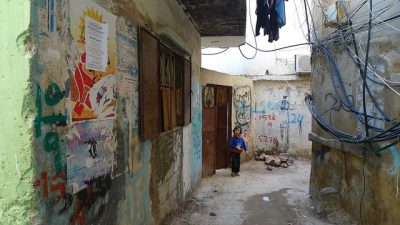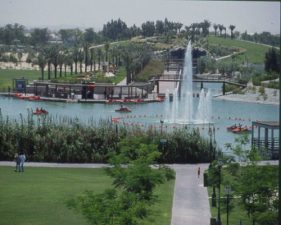 Middle East city planners take note: These seven steps to creating more efficient cities could literally save the world.
Middle East city planners take note: These seven steps to creating more efficient cities could literally save the world.
Cities account for 80% of the world’s total greenhouse gas emissions (GHG), 30% of which are generated in Canada and the United States. Both countries have massive sprawling cities, where the super-highway model reigns supreme. But having to travel long distances in order to achieve daily tasks or to work eats up fuel and contributes enormously to GHG emissions. In his book Seven Rules for Sustainable Cities, Patrick Condon has outlined seven simple strategies that can make dense urban environments cleaner, safer, and more livable. As population expands in the Middle East, urban planners who follow these steps instead of the sprawling American model will not only reduce greenhouse gas emissions but ingratiate themselves to what will undoubtedly result in a happier populace.
Here are the steps, taken from The Tyee:
1: Restore the street car:
A lot of time and energy will be saved if city residents have access to decent street cars that can transport them to services within reach.
2: Design an interconnected street system:
Thousands of people in the Middle East spend hours each week stuck in traffic because of poorly designed street networks. Condren proposes that an interconnected street system that is compatible with walking, biking, transit and requires only short trips will reduce congestion and improve quality of life.
3: Locate commercial services within a five minute walk. In order for this to be realizable, there must exist at least ten dwelling units per acre.
It makes no sense that we have to drive a car to the other side of town in order to do our monthly shopping or visit the dentist. Re-localizing services – the way they were before oil became a ubiquitous commodity – but smarter will bring energy consumption levels down in a very meaningful way.
4: Locate good jobs close to affordable homes.
Again, we have developed a culture that ships people all over their own countries and others in order to achieve their work. But the majority of jobs should be within easy reach of home, which will cut down time and energy use, and allow people to spend more time with their families.
5: Diversify housing types in every city
This suggestion alludes to the tendency to have a “rich” side of town and a “dodgy” side of town – no doubt helped in part by monied people’s unwillingness to share with poorer sectors of society. But this kind of system, Condren argues, makes cities uncompetitive and creates transportation problems. Creating different homes for different income levels will improve the city’s overall efficiency.
6: Created a linked system of natural acres and parks
This point not only argues for more green spaces as an aesthetic aspect of urban living, but as a crucial step to ensuring that cities are managing their natural resources properly.
7: Focus on developing lighter, greener, cheaper, and smarter infrastructure.
According to Tyee, suburban homes require on average four times as much infrastructure as their more walkable and urban counterparts.
The last rule is that these suggestions should be implemented in tandem, since creating a sustainable city requires a holistic approach. Implementing one rule without the others will drive down the system’s overall efficacy.
:: The Tyee
More on urban planning in the Middle East:
What Happened To Islam’s Environmentally-Friendly Architecture?
Hassan Fathy Is the Middle East’s Father of Sustainable Architecture
Haim Dotan’s Tao Of Architecture
image via melissasweetdream



